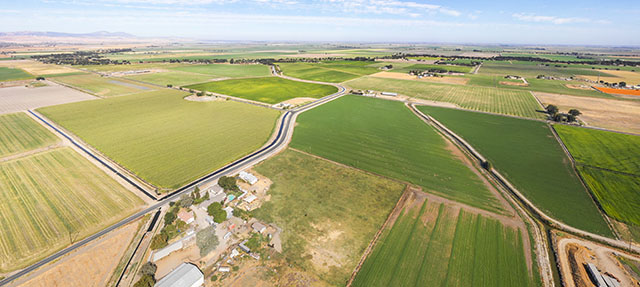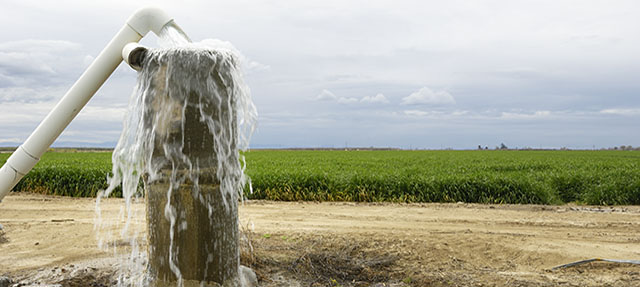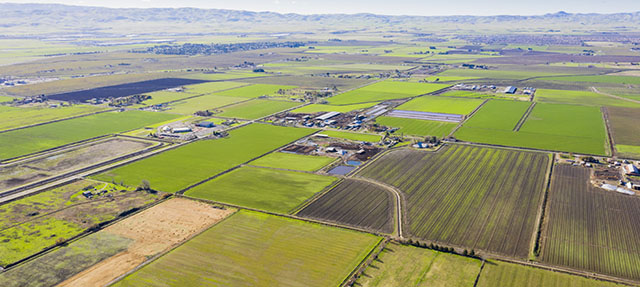The recent completion of groundwater sustainability plans for California’s most over-pumped basins was a major step toward bringing basins into long-term balance, as mandated by the Sustainable Groundwater Management Act (SGMA). As these plans move through the state approval process, the next stage is implementation. We talked to Trevor Joseph—the first SGMA employee at the Department of Water Resources (DWR), and now a member of a groundwater sustainability agency in the Sacramento Valley—about next steps and possible pitfalls.

PPIC: You’ve been involved with SGMA since its inception. What has surprised you the most about how it has unfolded?
TREVOR JOSEPH: I’m pleasantly surprised that SGMA has gone relatively well to date. To be honest, I didn’t think that groundwater sustainability agencies (GSAs) would do so well at establishing governance structures and preparing initial plans. And while these plans aren’t perfect, essentially all the GSAs in critically overdrafted basins met their deadlines.
That said, the challenging work of implementing plans remains. I’m really interested in what happens over the next couple of years, as DWR reviews the plans and implementation gets underway. Much will depend on how DWR approaches its review of the plans, how it supports agencies that will need to make modifications to their plans, and how the various parties react to DWR’s review.
Another big question is whether GSAs and stakeholders can continue to find areas of common ground to build from—since collaboration is critical to ultimate success.
There’s also a risk that people expect too much of SGMA. We need to remember it’s about making progress over time. That doesn’t mean we should shoot low in terms of meeting obligations or addressing critical issues. But SGMA is not a panacea, and local agencies simply can’t address all of the state’s big water issues with this act. For example, water quality is incorporated into SGMA, but GSAs actually have limited ability to address this issue. A multitude of other state and local programs and laws address water quality and are better vehicles for fixing groundwater quality problems.
PPIC: Groundwater planning is still underway in the Sacramento Valley. How does it differ from planning in the San Joaquin Valley?
TJ: There is an incredible amount of variability among the state’s more than 500 basins, which is why SGMA recognizes that sustainability must be defined at the local level. For example, portions of the San Joaquin Valley continue to have relatively high rates of land sinking, or subsidence, which we really don’t have in our region. Many basins in the Sacramento Valley have had very stable groundwater levels for the past 30 years. One important focus of plans in this region will be balancing the effects of groundwater pumping on streams to protect the environment while also allowing the continued use of groundwater.
PPIC: Where do we go from here on SGMA implementation?
TJ: This is a critical time, and local agencies can’t let up on the gas pedal. Over the next few years we’ll learn how well we did in meeting the preparatory requirements—for instance, did we develop governance structures that are strong enough to make very difficult decisions such as balancing water use through demand reduction, which will affect local economies and livelihoods?
I believe success also depends on continued support for the key premise of SGMA: that groundwater is best managed at the local level. It may not be possible in all cases—the state may need to step up in some instances, hopefully for a limited time. The state has already done a tremendous amount of really great work aiding GSAs with technical, planning, and financial assistance programs. But now that initial plans are done, additional planning assistance at the regional level is needed to help GSAs coordinate on things like water available for recharge and shared infrastructure needs.
SGMA gives local agencies 20 years to attain sustainability—and while that sounds like a long time, a lot of progress has to be made quickly, and that could be a challenge. The types of storage and recharge projects that will be needed can take many years to establish. The SGMA timeline may be inadequate for that. I’m hoping that GSAs and the state can come together in new ways to develop regional solutions, such as developing additional groundwater recharge, so the SGMA process doesn’t end up focusing solely on demand reduction.





